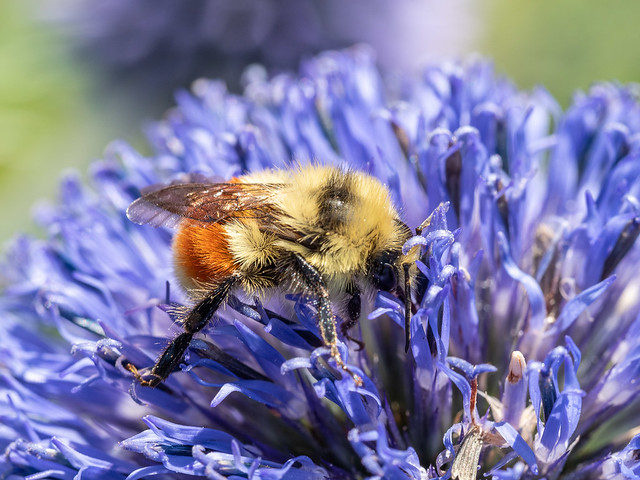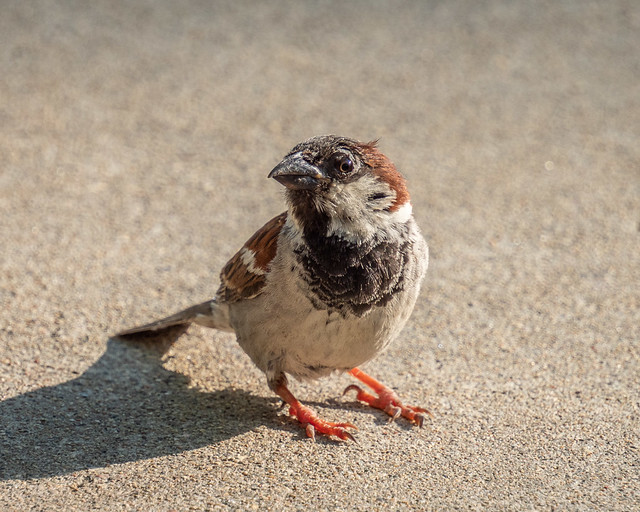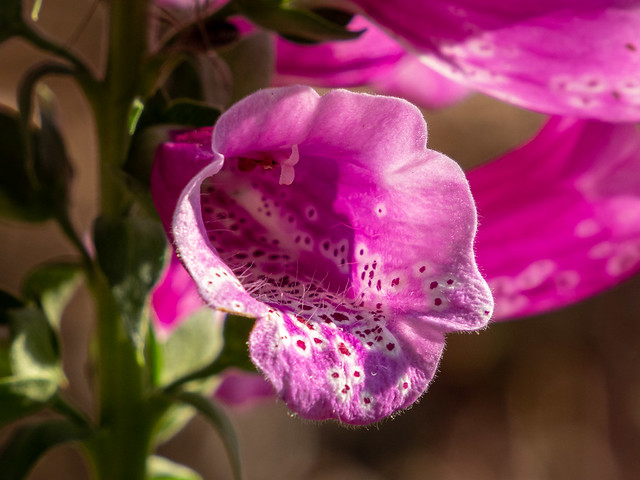
I recently bought a camera I'd been looking at for a while - an Olympus OM-D E-M1 Mark II. It was actually released several years ago, but the new version they released, the E-M1X, is quite a bit bigger and quite a bit more expensive so I wasn't interested.
I've been happy with my Nikon 7200. They also released a new version, the 7500, but it didn't really have any big new features.
The main attraction with the Olympus is that it's a "micro four-thirds" sensor. The 7200 has an APS-C sensor with a 1.5 crop factor. Micro four-thirds has a crop factor of 2, i.e. a smaller sensor. Technically bigger sensors are better. But the bigger the sensor, the bigger the camera and the lenses, especially long telephoto lenses. The sensor is 20 mega pixels versus 24 for the 7200, but that's still plenty for me, and probably better for a smaller sensor to have less pixels.
I'm usually either traveling or hiking (or both) so size and weight are important. I'm hoping with the Olympus that I'll be more likely to carry it (and lenses).
Here's a comparison with my macro lenses. The Olympus macro lens is actually brighter (f2.8 vs f3.5) which usually makes it bigger, but it's tiny. (And I'm really happy with the results from it.)

It's a "mirrorless" camera, as opposed to a DSLR like the 7200. So it has an electronic rather than optical viewfinder. There are pros and cons to both. Optical viewfinders are nice, they're bright and instant. Electronic viewfinders have less resolution and can lag slightly. But electronic viewfinders can do a lot more - they can display other information, they can highlight what's in focus or what's too dark or too light, and they can show you what the final image will look like. And in low light, they can be brighter than an optical viewfinder.
Despite it's small size, the EM1 has a large number of physical dials and buttons (as well as a touch screen). And you can customize almost all of them from the huge menu system. Depending on your preferences, this might be a good feature or a bad one. Personally I like having lots of physical controls and being able to configure them for the things I use. (and I'm not intimidated by the complex menus)
The screen is also articulated. I don't need that a lot, but when I do (e.g. shooting an insect in an awkward position) it's very handy. It also means you can fold it screen face in so it's protected, which is nice when the camera may get bumped around.

Another big selling feature is the image stabilization built into the camera body. My old Pentax DSLR's had that and I loved it. Whereas most Nikon and Canon DSLR's depend on the lenses to provide image stabilization. The Olympus is known for having the best image stabilization (they claim 5.5 stops difference). I seldom use a tripod and hand hold almost all of my shots, so good stabilization is crucial to getting sharp results.
In the past, autofocus on mirrorless cameras didn't work as well as DSLR's. But it has improved a lot, and I've been impressed with how fast and well it works on the EM1.
It doesn't have a built in flash, but it does come with a tiny external flash that is powered by the camera.
One of the features I was look forward to was "focus bracketing", where the camera captures a series of images with slightly different focus. Afterwards, on the computer, you can either choose the one with the best focus, or you can combine multiple shots into one (focus stacking). This is especially valuable for macro photography where the depth of focus is extremely shallow. I've done a bit of this in the past where I've happened to get shots with different focus that I could combine. But unless you use a tripod and focusing rail it's very hard to do focus bracketing manually. With the new camera it shoots the series of shots rapidly, which is important because you don't want the subject (e.g. an insect) to move during the sequence. (If you look closely at the first image you can see that the fly moved its leg between shots. You could fix the focus stacking, but I haven't got that fancy yet.)

It likely won't excite anyone but me, but I love the detail in this focus stacked moth.

My one complaint about the focus bracketing is that it isn't bracketing. Normally "bracketing" means taking shots either side of what you think is right. The focus bracketing doesn't do that, it just goes back (further away) from where it starts. That means you have to start by focusing on the closest point of the subject. But with an insect or even a flower, it's not always easy to pick out the closest point. It would be nice if you could configure it to take some shots with a closer focus as well as farther. Maybe they'll add that in a firmware update (they have a history of adding features via software update).
[Update: six months later I discovered it does have this feature, in a round about way. If you turn on Focus Stacking so that it combines the shots in camera, then it does bracket either side of your focus point. I normally prefer to do the stacking on my computer with Photoshop so I hadn't paid attention to this feature. But it saves the original shots as well as the stacked version, so I can still stack in Photoshop if I want. It still seems odd that this feature isn't a little more direct, but at least it's there.]
If you look closely at this focus stacked image, you'll see that parts of the petals are slightly out of focus. That's because I missed the closest point.

Even without focus stacking the camera and macro lens do a great job. This fly was tiny - about 1/4".


A few more random shots as I test the new camera and lenses.





The selection of lenses for micro four-thirds is decent, but not as good as for Nikon or Canon. My "normal" lens on my Nikon is 27 to 600mm equivalent. That's a huge range, from moderately wide to quite long. The closest equivalent for the Olympus is 24 to 400 equivalent. That a good range, but definitely not as long. My "big" lens for the Nikon is 225 to 900 equivalent. The "big" lens for the Olympus is 600mm equivalent, with a teleconverter taking it to 900 mm, but no zoom. For now, I settled for a smaller, lighter (and cheaper) 150 to 600 mm equivalent. I haven't used it much yet, but here are a couple of sample shots.


So far I'm really happy with the new camera. I've got some shots I'm really happy with that I don't think I could have got with my Nikon.
See all 55 photos in this album
No comments:
Post a Comment